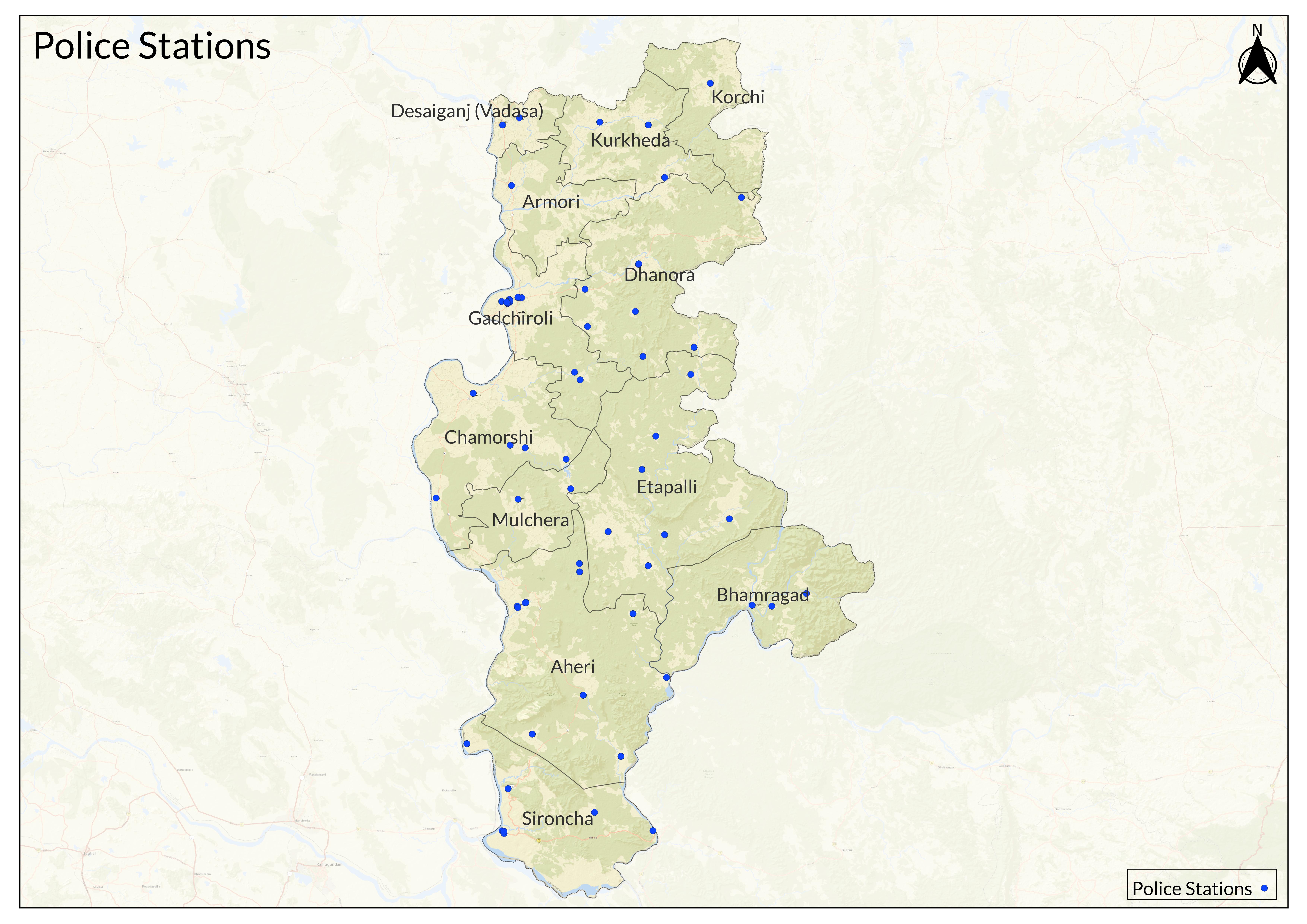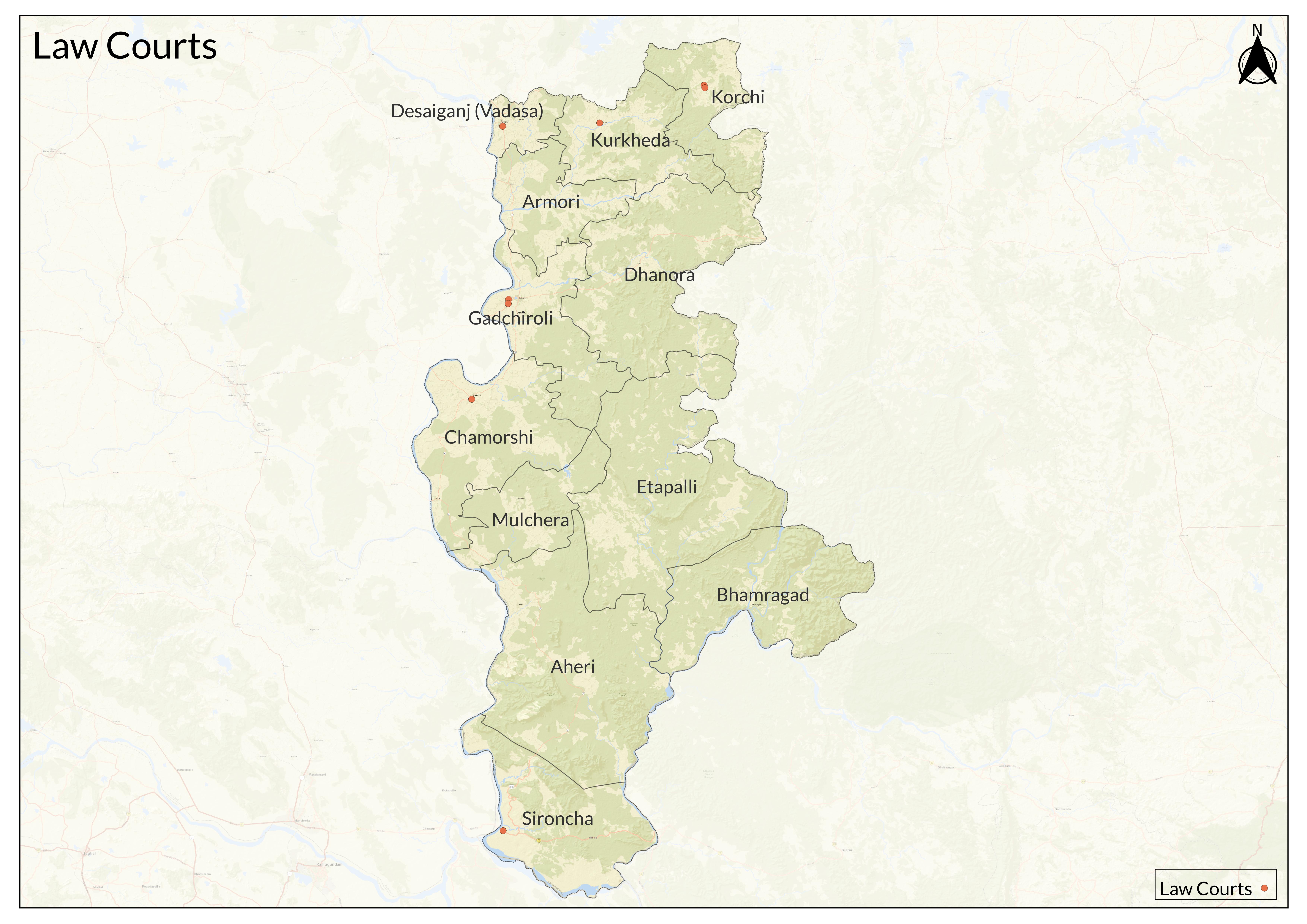Contents
- Community Perception of Safety
- Graphs
- Criminal Cases
- A. Cognizable Crimes under the Indian Penal Code (IPC)
- B. Select Offenses affecting the Human Body
- C. Select Offenses against Property
- D. Select Offenses against Public Tranquility
- E. Select Offenses relating to Documents and Property Marks
- F. Select Miscellaneous Crimes under the IPC
- G. Cognizable Crimes under Special and Local Laws (SLL)
- H. Select Offenses under Special and Local Laws (SLL)
- I. Crimes against Women
- J. Select Cases of Crimes against Women
- K. Cyber Crime
- L. Select Cases of Cyber Crime
- M. Cases of Fraud
- N. Reported Crimes against Women and Children
- Police Infrastructure and Workforce
- A. Police Infrastructure
- B. Police Officers and Employees
- Judicial System
- A. Number of Functioning Courts
- B. Judge Positions
- C. Cases Resolved
- D. Number of Original Cases Resolved
- E. Number of Appeal Cases Resolved
GADCHIROLI
Police & Judiciary
Last updated on 5 November 2025. Help us improve the information on this page by clicking on suggest edits or writing to us.
Gadchiroli district has a strategically positioned network of police stations, ensuring law enforcement across its tribal, rural, and urban areas. Key stations in Gadchiroli, Aheri, Armori, Chamorshi, and Sironcha play a crucial role in maintaining law and order, especially in regions affected by Naxalite activities.

In daily interactions, locals address policemen as "mama" or "kaka," reflecting a familiar connection. The impact of PESA and improved access to education have also encouraged tribal youth to pursue careers in state and central security forces, contributing to the region’s law enforcement strength.
Community Perception of Safety
In Gadchiroli, safety concerns are shaped by the district’s unique geographical and socio-political landscape. Unlike urban areas, where crime is often localized, residents in forested regions face threats from criminal gangs that operate along remote roads. Incidents of robbery and assault, particularly at night, have led many to avoid travelling through these areas in the evenings
Historically, the fear of Naxalites discouraged residents of remote villages from engaging with the police. Many refrained from approaching law enforcement, fearing repercussions. Youths, in particular, hesitated to join the police force, as recruitment was often met with threats or violence from Naxal groups. As a result, many aspiring candidates abandoned their dreams of serving in law enforcement and migrated to cities for work.
However, this perception is gradually changing. The police have intensified efforts to build trust within Naxal-affected communities, encouraging more youth to step forward for recruitment. With increased outreach and security initiatives, youth are now showing greater interest in joining the police force, marking a significant shift in the region’s approach to law enforcement.
Graphs
Criminal Cases
Police Infrastructure and Workforce
Judicial System

Last updated on 5 November 2025. Help us improve the information on this page by clicking on suggest edits or writing to us.